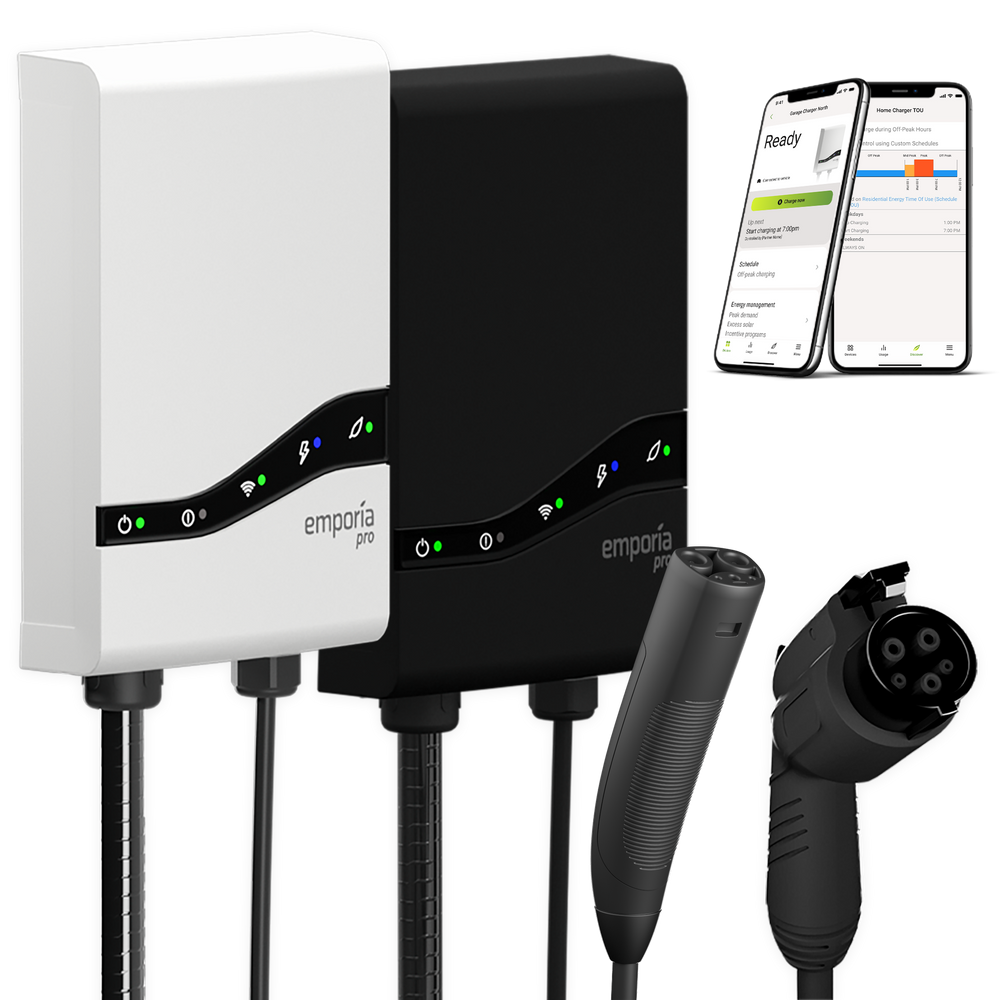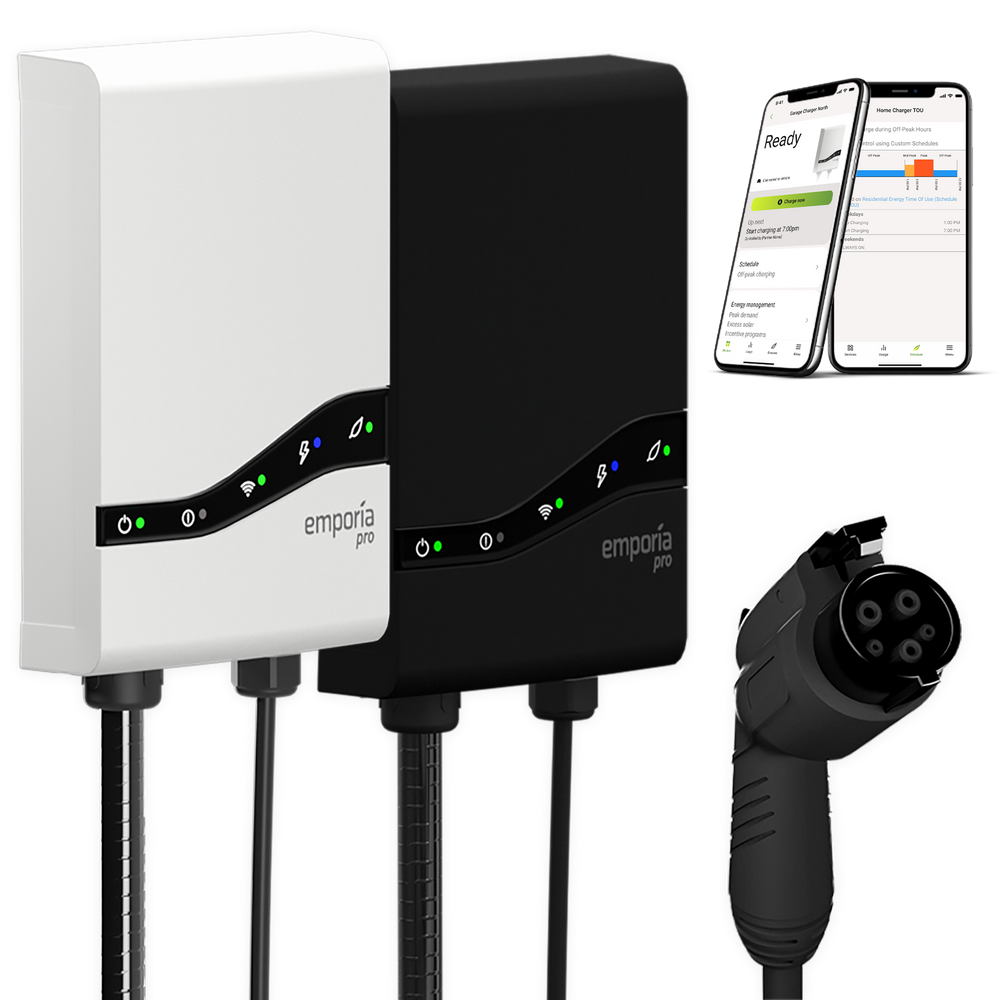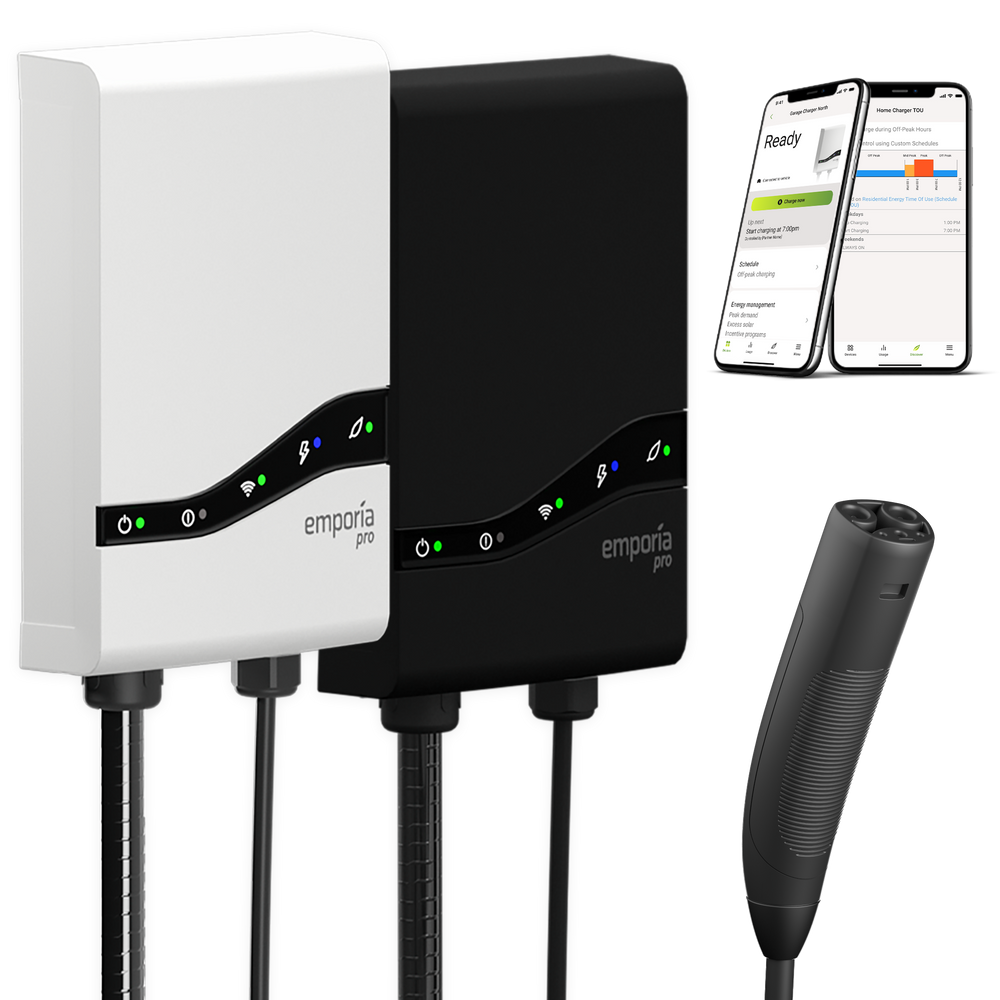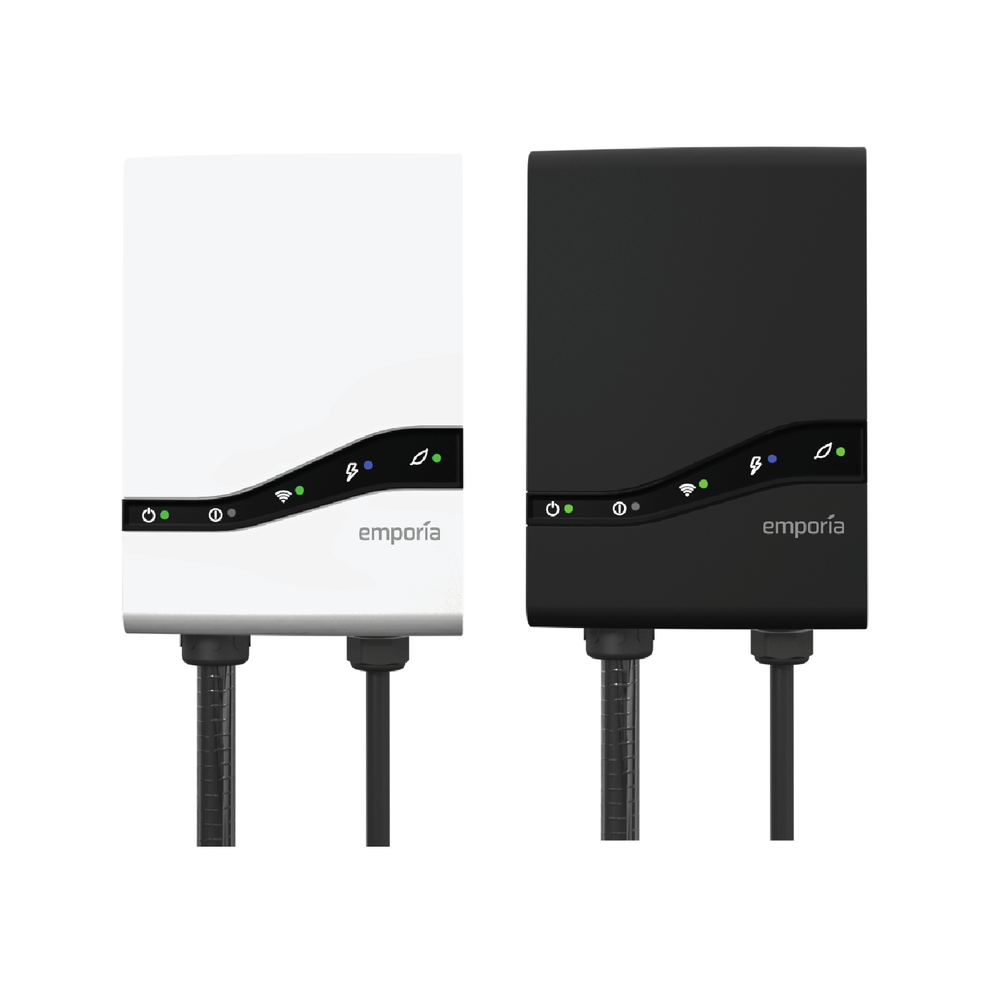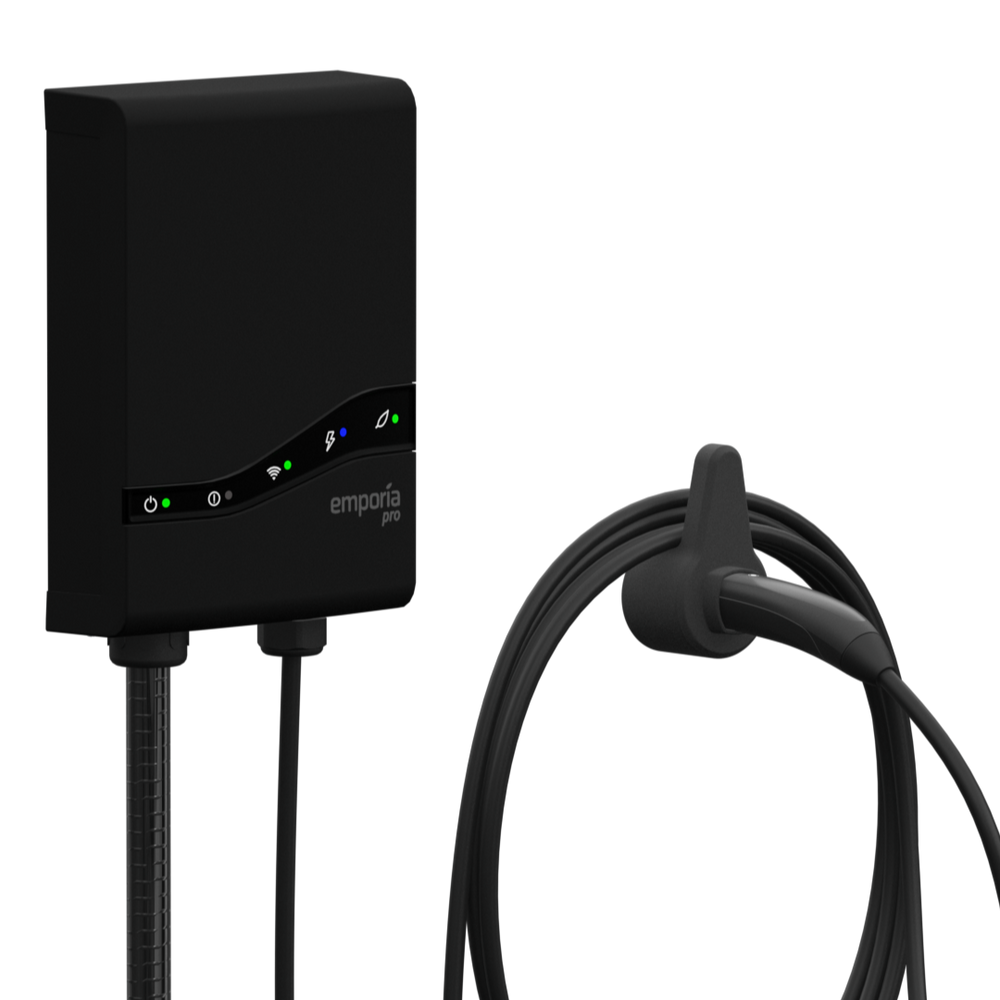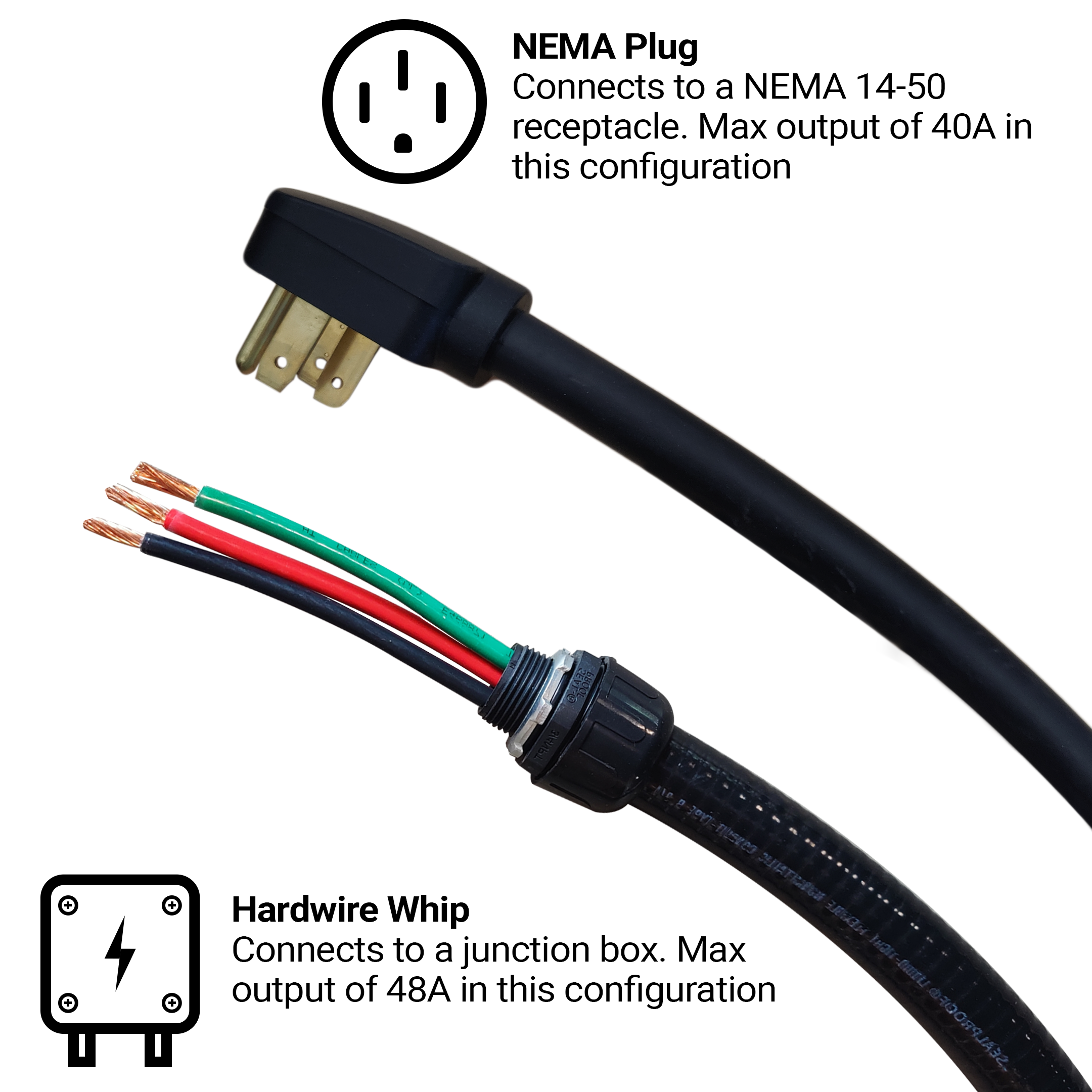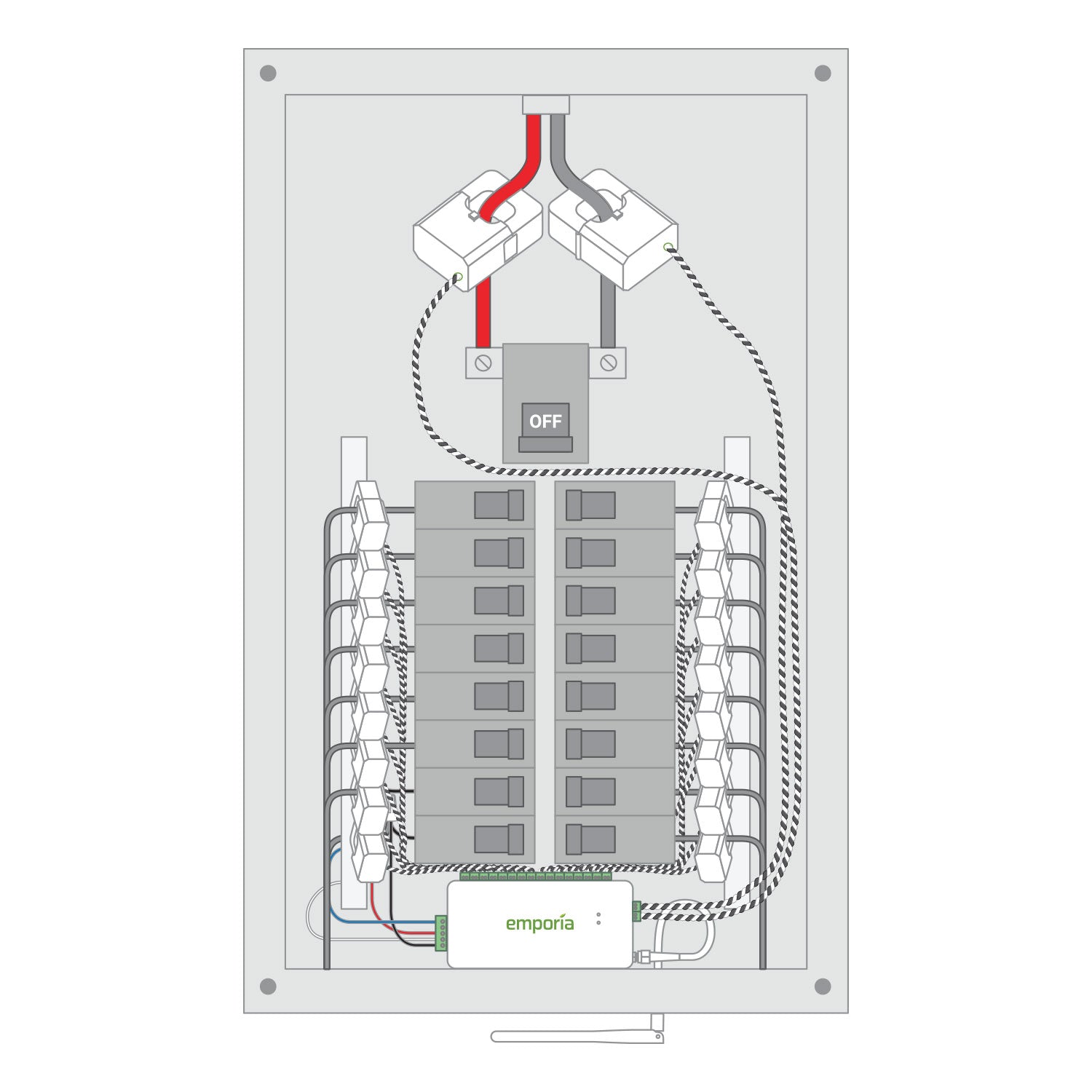Fact: ~50% of US homes require a full electrical panel upgrade to safely install a Level 2 EV Charger.
The Emporia Pro EV Charger makes powerful automated Level 2 charging possible for almost any home. Thanks to PowerSmart technology, you can charge your EV up to 9 times faster than a level 1 charger using your existing electrical panel and save thousands on electrical upgrades.
Plug into the future of smart EV charging
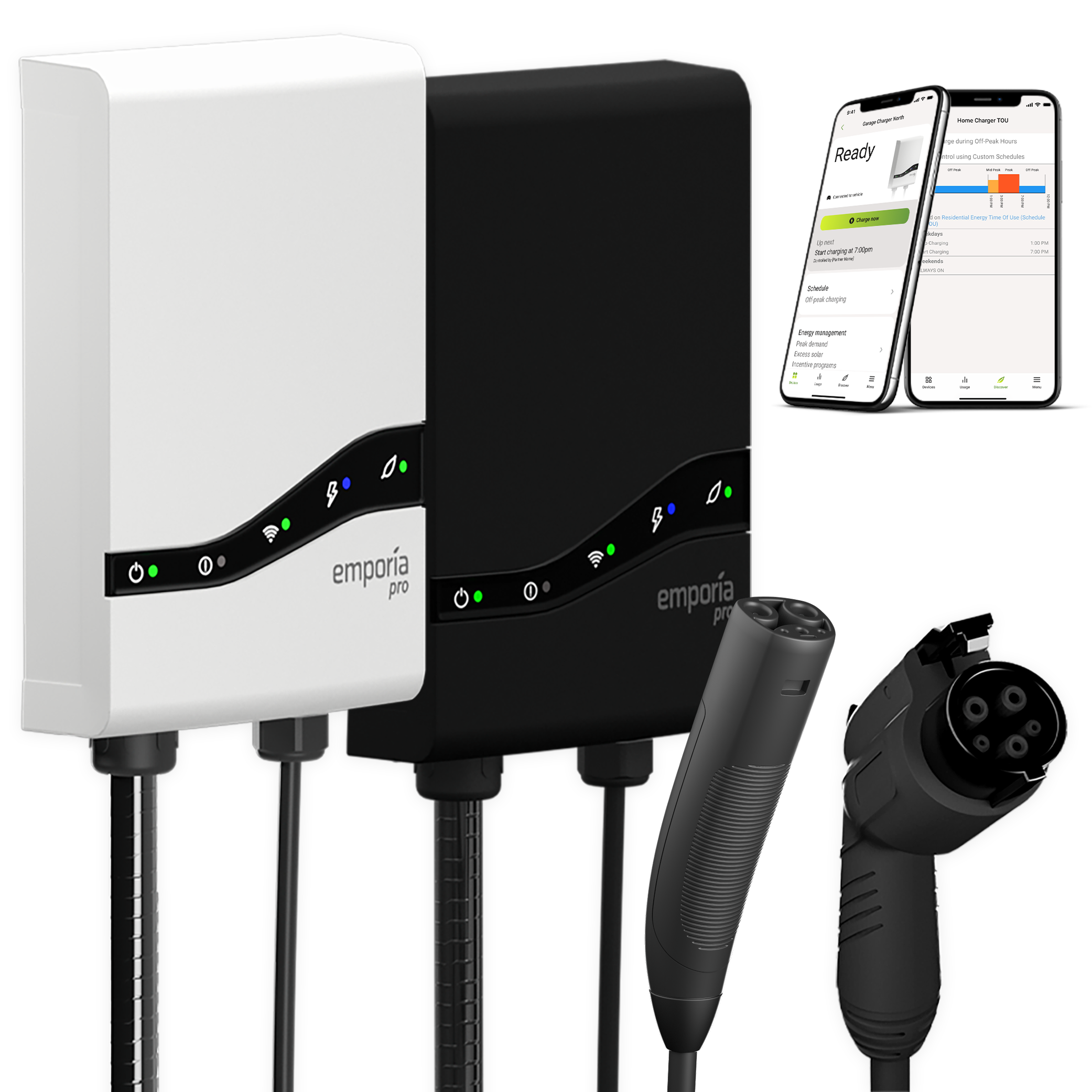
Charge 9x Faster
Charges any EV up to 9x faster than with a Level 1 charger
Build on Award-Winning Tech
Rated Best Level 2 EV Charger by State of Charge
Savings
Works with your existing electrical panel saving you thousands on upgrades
UL and NEMA certified
UL certified and NEMA 4-rated for reliable all-weather use
Charge 9x Faster
Charges any EV up to 9x faster than with a Level 1 charger
Build on Award-Winning Tech
Rated Best Level 2 EV Charger by State of Charge

Savings
Works with your existing electrical panel saving you thousands on upgrades
UL and NEMA certified
UL certified and NEMA 4-rated for reliable all-weather use
How PowerSmart Load Management works
PowerSmart is a software upgrade that unlocks the full power of the Emporia Pro EV Charger when paired with the Vue Energy Monitor installed in your electrical panel.
Here's how it works: PowerSmart uses real-time energy from the Vue Energy Monitor device in your electrical panel and measures your energy use thousands of times per second and allocates only the available panel capacity to your EV charger to never exceed the maximum panel capacity. The Vue comes in the box with the Emporia Pro EV Charger, and can be installed by your electrician at the same time as your charger install.
What's in the box?
Your Emporia Pro comes with the sleek Emporia Pro charger with 25' cable, an Emporia Vue 3 Home Energy Monitor with two 200a CT sensors, PowerSmart software, and mounting hardware.
Professional installation is recommended and Emporia has licensed, vetted installation partners ready to help.
Additional Information
What's In The Box
Emporia Pro Level 2 EV Charger (White model EMC2-A, or Black model EMC2-B)
- 25' Cable and J1772 Connector
Vue 3 Home Energy Monitor
- 2 200A CTs for whole home monitoring
PowerSmart Software
- Built-in automated load balancing technology
Power Specs
Input Voltage:
- 208/240VAC 50/60Hz
Power Charge:
- 11.5kW (240V/48A) / 9.6kW (240V/40A) /
- 10kW (208V/48A) / 8.3kW (208V/40A)
Required Breaker
- Dedicated 50A+ dual pole for 40A
- Dedicated 60A+ dual pole for 48A
Additional Specs
Connector
- 25’ cable SAE J1772 connector
Power Wiring
- NEMA Type 14-50P (up to 40A) with 28" cable. Hardwired (up to 48A) with 3' long conduit.
Enclosure
- Enclosure Watertight NEMA Type 4 indoor/outdoor
Temp Range
- -22°F to 122°F (-30°C to 50°C)
Certifications
NEC 625: Electric Vehicle Charging System Equipment
SAE J1772: Electric Vehicle Conductive Charge Coupler Standard
SAE J3400: North American Charging Systems (NACS) for Electric Vehicles
UL 817: Cord Sets and Power-Supply Cords
UL 991: Safety Tests for Safety-Related Controls Employing Solid-State Devices
UL 2251: Standard for Plugs, Receptacles and Couplers for Electric Vehicles
UL 2594: Standard for Electric Vehicle Supply Equipment
GFCI Protection
- The National Electrical Code (NEC) now requires a GFCI breaker installed on any circuit using a 6-50 or 14-50 outlet. Since the Emporia EV Charger already has built-in GFCI protections, it can cause false/unwarranted tripping when installed on a line with GFCI protections also provided on the breaker.
- Your electrician will be able to provide the best information for your installation scenario. If GFCI breaker installation is a requirement for your installation, then we recommend using the hardwired installation method since that is not required to be GFCI protected in the same way the NEMA outlet is. Due to conflicting requirements between NEC (NFPA70) and UL certifications related to the behavior of GFCI operations on EV Charging equipment, we can't provide more specific installation recommendations since it will depend on your location and you should consult your professional installer for more details.

